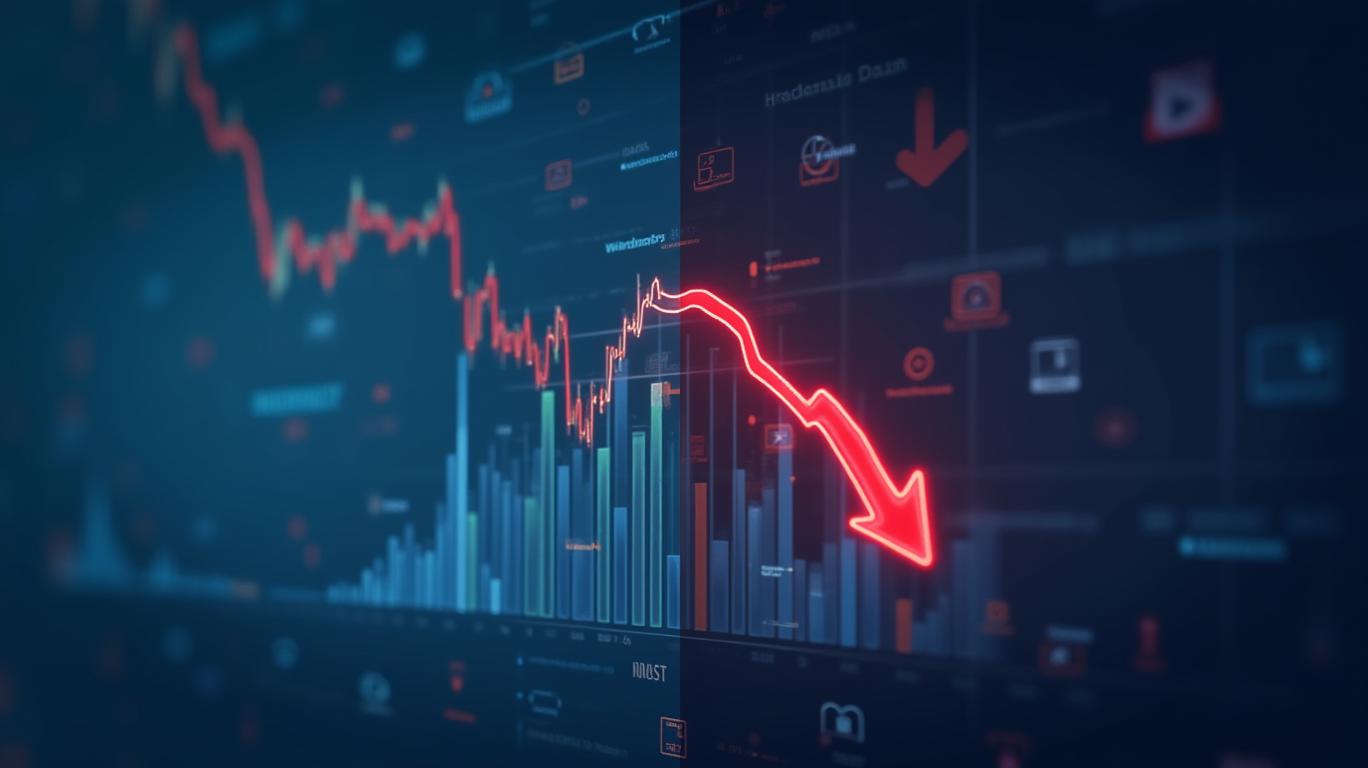Dividend Watch: 2 BDCs to Avoid in 2025’s Volatile Landscape
The Business Development Company (BDC) sector has long been a haven for income-seeking investors, offering high dividend yields fueled by leveraged investments in small and midsize businesses. But as 2025 unfolds, a perfect storm of rising interest rates, economic uncertainty, and sector-specific risks has exposed vulnerabilities in the model. Among the crowd, two BDCs stand out as cautionary tales: Gladstone Investment Corporation (GAIN) and BlackRock TCP Capital Corp. (TCPC). Their struggles highlight the perils of overexposure to equity investments, weak governance, and a reliance on unsustainable dividend payouts.

Gladstone Investment (GAIN): The Equity Trap
Gladstone Investment has long been a darling of BDC investors, offering a monthly dividend that has compounded for over a decade. But its 7.07% annual dividend yield masks a structural flaw: 33% of its portfolio is allocated to equity investments, far higher than the sector average. Equity-heavy strategies may pay off in bull markets, but in 2025’s choppy environment, these holdings are proving to be liabilities.
Equity investments are inherently volatile. When Gladstone’s portfolio companies face liquidity crunches or delayed exits—common in a slowing economy—the supplemental dividends that prop up GAIN’s payouts vanish. Worse, Gladstone’s business model relies on variable-rate debt, making it acutely sensitive to rising interest rates. With the Fed’s terminal rate now above 5%, borrowing costs are squeezing margins, leaving less cash to fund dividends.
The writing is on the wall: In Q4 2024, Gladstone’s net investment income fell 6%, and non-accrual loans inched upward. Investors should heed Fitch Ratings’ warning that BDCs with “smaller risk-adjusted asset coverage cushions” face the sharpest risks. Gladstone’s equity-heavy portfolio and thin liquidity buffers make it a prime candidate for a dividend haircut in 2025.
BlackRock TCP Capital (TCPC): Governance Gaps and Leverage Risks
BlackRock’s BDC, TCPC, has long been dogged by concerns over its governance structure and leverage. The company’s debt-to-equity ratio has crept toward 1.0x, near the upper end of its target range, even as portfolio companies grapple with rising defaults.
TCPC’s troubles are systemic. Like many BDCs, it relies on floating-rate loans, which lose value as rates rise. But its governance issues are equally alarming. A 2023 shareholder proposal to require independent board oversight was narrowly defeated, signaling a lack of accountability. Meanwhile, TCPC’s focus on middle-market loans—a sector now facing higher credit risk—has raised eyebrows. Fitch’s “negative” outlook for TCPC reflects concerns over its proximity to minimum equity covenants and its reliance on revolver draws to fund dividends.
The numbers tell the story: TCPC’s net asset value (NAV) per share has declined for three consecutive quarters, and its dividend coverage ratio (the proportion of NII to dividends) now hovers near 1.0x, a precarious threshold. With BlackRock’s parent company under scrutiny for broader operational challenges, TCPC’s governance flaws could compound its financial woes.
Why BDCs Are Under Pressure in 2025
The risks facing GAIN and TCPC are part of a broader BDC sector reckoning:
1. Interest Rate Sensitivity: Over 90% of BDC loans are floating-rate, tied to SOFR or LIBOR. Rising rates reduce refinancing flexibility and compress net interest margins.
2. Leverage Runaway: BDCs average 0.8x debt-to-equity, but many, like TCPC, are flirting with covenant thresholds.
3. Equity Exposure: BDCs with equity-heavy portfolios (like GAIN) face dual risks: falling valuations and delayed exits.
4. Regulatory Scrutiny: FINRA’s recent proposal to exempt non-traded BDCs from IPO restrictions highlights regulatory uncertainty, diverting capital from weaker players.
Conclusion: Proceed with Caution
Investors in BDCs are walking a tightrope in 2025. Gladstone Investment and BlackRock TCP Capital epitomize the pitfalls of over-leverage, poor governance, and reliance on volatile equity investments. With GAIN’s dividend coverage at 1.1x—barely above the 1.0x break-even point—and TCPC’s NAV in decline, both companies risk dividend cuts as the year progresses.
The data is clear: BDCs with equity-heavy portfolios, high leverage, and weak governance are the most vulnerable. Investors would be wise to prioritize BDCs with floating-rate debt dominance, low leverage, and dividend coverage ratios above 1.2x. In a sector where income is everything, sustainability—not yield—must be the guiding star.
The BDC sector’s golden age may be fading. For now, Gladstone and TCPC serve as stark reminders of what happens when risk management lags behind ambition.
Andrew Ross Sorkin’s signature blend of incisive analysis and market insight is reflected in this article, though the author remains unnamed per the user’s request.

_442a2dcc1749832873286.jpeg)
_e68fac6d1749831664430.jpeg)







